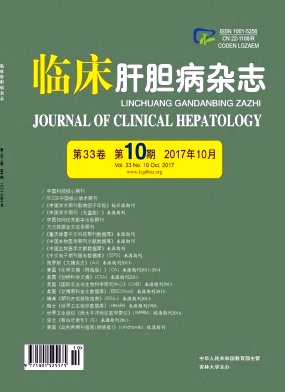|
[1]SIEGEL RL, MILLER KD, JEMAL A.Cancer Statistics, 2017[J].CA Cancer J Clin, 2017, 67 (1) :7-30.
|
|
[2]CILIBERTO D, BOTTA C, CORREALE P, et al.Role of gemcitabine-based combination therapy in the management of advanced pancreatic cancer:a meta-analysis of randomised trials[J].Eur JCancer, 2013, 49 (3) :593-603.
|
|
[3]SOSA V, MOLINE T, SOMOZA R, et al.Oxidative stress and cancer:an overview[J].Ageing Res Rev, 2013, 12 (1) :376-390.
|
|
[4]SCHIEBER M, CHANDEL NS.ROS function in redox signaling and oxidative stress[J].Curr Biol, 2014, 24 (10) :r453-r462.
|
|
[5]UCHIDA D, TAKAKI A, ISHIKAWA H, et al.Oxidative stress balance is dysregulated and represents an additional target for treating cholangiocarcinoma[J].Free Radic Res, 2016, 50 (7) :732-743.
|
|
[6]KARIN M, GRETEN FR.NF-kappa B:linking inflammation and immunity to cancer development and progression[J].Nat Rev Immunol, 2005, 5 (10) :749-759.
|
|
[7]KAMISAWA T, WOOD LD, ITOI T, et al.Pancreatic cancer[J].Lancet (London, England) , 2016, 388 (10039) :73-85.
|
|
[8]BOURSI B, FINKELMAN B, GIANTONIO BJ, et al.A clinical prediction model to assess risk for pancreatic cancer among patients with new-onset diabetes[J].Gastroenterology, 2017, 152 (4) :840-850, e3.
|
|
[9]ZHANG Y, YAN W, COLLINS MA, et al.Interleukin-6 is required for pancreatic cancer progression by promoting MAPK signaling activation and oxidative stress resistance[J].Cancer Res, 2013, 73 (20) :6359-6374.
|
|
[10]PANG TS, CAO LP, LIN TY, et al.Multiple factor analysis of pancreatic cancer-associated risk factors[J].Chin J Pract Surg, 2014, 34 (10) :962-966. (in Chinese) 庞天舒, 曹利平, 林天宇, 等.胰腺癌相关危险因素多因素分析[J].中国实用外科杂志, 2014, 34 (10) :962-966.
|
|
[11]NARENDHIRAKANNAN RT, HANNAH MA.Oxidative stress and skin cancer:an overview[J].Indian J Clin Biochem, 2013, 28 (2) :110-115.
|
|
[12]MATSUZAWA A, ICHIJO H.Redox control of cell fate by MAP kinase:physiological roles of ASK1-MAP kinase pathway in stress signaling[J].Biochim Biophys Acta, 2008, 1780 (11) :1325-1336.
|
|
[13]NGUYEN T, NIOI P, PICKETT CB.The Nrf2-antioxidant response element signaling pathway and its activation by oxidative stress[J].J Biol Chem, 2009, 284 (20) :13291-13295.
|
|
[14]LUO Y, ZOU P, ZOU J, et al.Autophagy regulates ROS-induced cellular senescence via p21 in a p38 MAPKalpha dependent manner[J].Exp Gerontol, 2011, 46 (11) :860-867.
|
|
[15]JU KD, LIM JW, KIM KH, et al.Potential role of NADPH oxidase-mediated activation of Jak2/Stat3 and mitogen-activated protein kinases and expression of TGF-beta1 in the pathophysiology of acute pancreatitis[J].Inflamm Res, 2011, 60 (8) :791-800.
|
|
[16]CAO L, CHEN X, XIAO X, et al.Resveratrol inhibits hyperglycemia-driven ROS-induced invasion and migration of pancreatic cancer cells via suppression of the ERK and p38 MAPK signaling pathways[J].Int J Oncol, 2016, 49 (2) :735-743.
|
|
[17]LI W, CAO L, CHEN X, et al.Resveratrol inhibits hypoxia-driven ROS-induced invasive and migratory ability of pancreatic cancer cells via suppression of the Hedgehog signaling pathway[J].Oncol Rep, 2016, 35 (3) :1718-1726.
|
|
[18]ZHANG C, CAO S, TOOLE BP, et al.Cancer may be a pathway to cell survival under persistent hypoxia and elevated ROS:a model for solid-cancer initiation and early development[J].Int J Cancer, 2015, 136 (9) :2001-2011.
|
|
[19]YANG YF, TAN XD, ZHOU L, et al.Advances in the study of the relationship between MicroRNA and pancreatic cancer[J].Chin JMed Offic, 2016, 44 (11) :1203-1205. (in Chinese) 杨一帆, 谭晓冬, 周磊, 等.MicroRNA与胰腺癌关系研究进展[J].临床军医杂志, 2016, 44 (11) :1203-1205.
|
|
[20]FAVARO E, RAMACHANDRAN A, MCCORMICK R, et al.MicroRNA-210 regulates mitochondrial free radical response to hypoxia and krebs cycle in cancer cells by targeting iron sulfur cluster protein ISCU[J].PLo S One, 2010, 5 (4) :e10345.
|
|
[21]WANG P, ZHU CF, MA MZ, et al.Micro-RNA-155 is induced by K-Ras oncogenic signal and promotes ROS stress in pancreatic cancer[J].Oncotarget, 2015, 6 (25) :21148-21158.
|
|
[22]VENKATARAMAN S, ALIMOVA I, FAN R, et al.MicroRNA128a increases intracellular ROS level by targeting Bmi-1 and inhibits medulloblastoma cancer cell growth by promoting senescence[J].PLo S One, 2010, 5 (6) :e10748.
|
|
[23]MATEESCU B, BATISTA L, CARDON M, et al.miR-141 and miR-200a act on ovarian tumorigenesis by controlling oxidative stress response[J].Nat Med, 2011, 17 (12) :1627-1635.
|
|
[24]JAJOO S, MUKHERJEA D, KAUR T, et al.Essential role of NADPH oxidase-dependent reactive oxygen species generation in regulating microRNA-21 expression and function in prostate cancer[J].Antioxid Redox Signal, 2013, 19 (16) :1863-1876.
|
|
[25]SRIDHARAN DM, ASAITHAMBY A, BAILEY SM, et al.Understanding cancer development processes after HZE-particle exposure:roles of ROS, DNA damage repair and inflammation[J].Radiat Res, 2015, 183 (1) :1-26.
|
|
[26]HOCEVAR BA, KAMENDULIS LM, PU X, et al.Contribution of environment and genetics to pancreatic cancer susceptibility[J].PLo S One, 2014, 9 (3) :e90052.
|
|
[27]HUSAIN K, CENTENO BA, CHEN D T, et al.Prolonged survival and delayed progression of pancreatic intraepithelial neoplasia in LSL-Kras G12D/+;Pdx-1-Cre mice by vitamin E delta-tocotrienol[J].Carcinogenesis, 2013, 34 (4) :858-863.
|
|
[28]CHEN Q, ESPEY MG, SUN AY, et al.Pharmacologic doses of ascorbate act as a prooxidant and decrease growth of aggressive tumor xenografts in mice[J].Proc Natl Acad Sci U S A, 2008, 105 (32) :11105-11109.
|
|
[29]MONTI DA, MITCHELL E, BAZZAN AJ, et al.Phase I evaluation of intravenous ascorbic acid in combination with gemcitabine and erlotinib in patients with metastatic pancreatic cancer[J].PLo S One, 2012, 7 (1) :e29794.
|
|
[30]WELSH JL, WAGNER BA, van't ERVE TJ, et al.Pharmacological ascorbate with gemcitabine for the control of metastatic and node-positive pancreatic cancer (PACMAN) :results from a phase Iclinical trial[J].Cancer Chemother Pharmacol, 2013, 71 (3) :765-775.
|
|
[31]SHIN SH, KIM SC, HONG SM, et al.Genetic alterations of K-ras, p53, c-erb B-2, and DPC4 in pancreatic ductal adenocarcinoma and their correlation with patient survival[J].Pancreas, 2013, 42 (2) :216-222.
|
|
[32]DERAMAUDT T, RUSTGI AK.Mutant KRAS in the initiation of pancreatic cancer[J].Biochim Biophys Acta, 2005, 1756 (2) :97-101.
|







 DownLoad:
DownLoad: